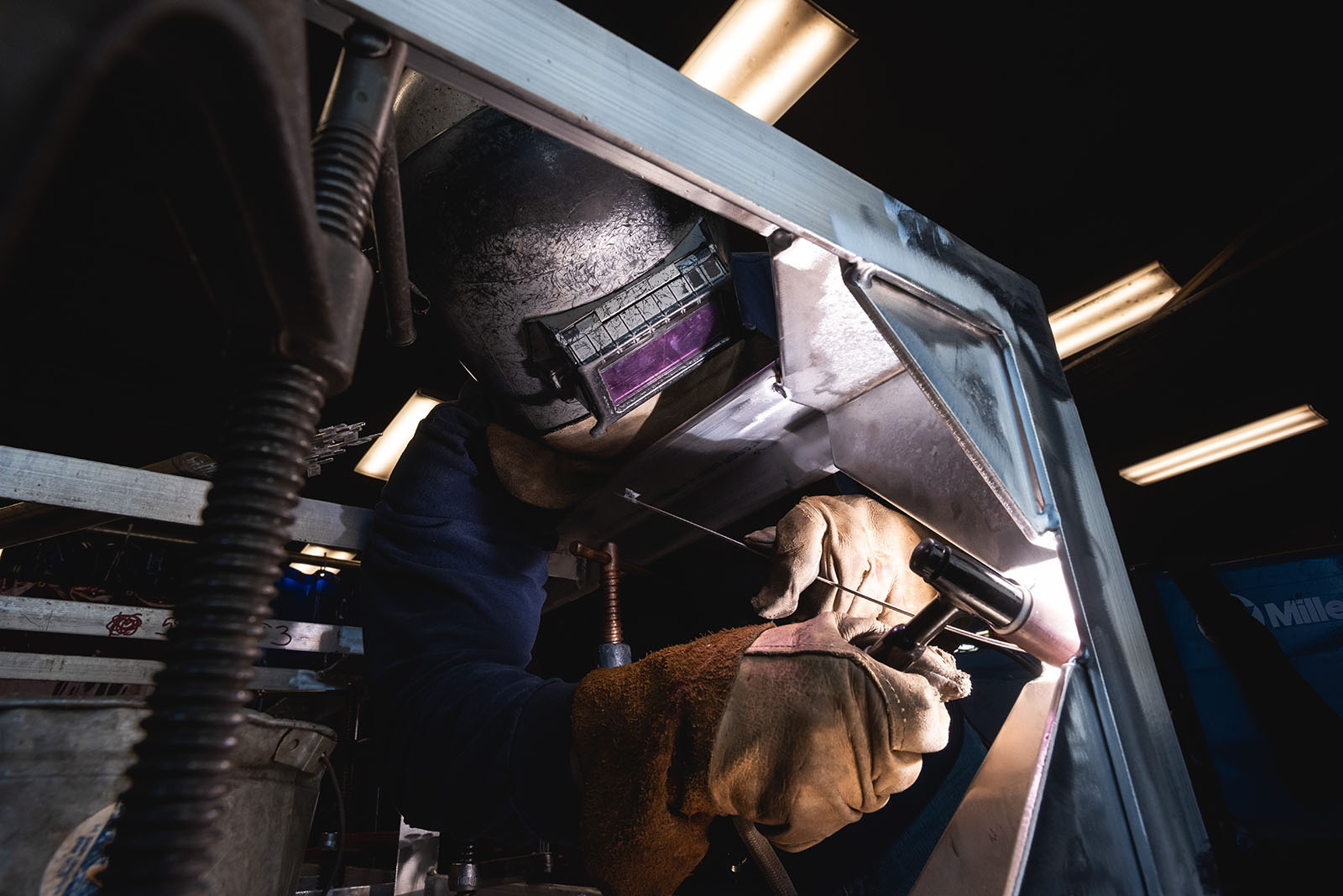
NATIONAL HARBOR, Md. – The supply chain crisis exacerbated by the pandemic drove the Pentagon to focus new attention on its crucial but shrinking industrial base, Navy officials said Tuesday.
Speaking at the 2022 Sea Air Space conference here, Karen Fenstermacher, executive for strategic initiatives, Naval Supply System Command, said COVID-19 showed the value of “whole-of-government approaches” to challenges ranging from supply to transportation. “One of the big challenges is aggregating demand” rather than stove-piping requests for specific items used by many agencies inside the Navy and across the government.
Kurt Wendelken, vice commander of Naval Supply Systems Command, said a key early concern in the pandemic “was mitigating repair lines going cold” as plants shut down for lack of parts and worker illnesses. He added later, “there’s a limited number of suppliers” after decades of defense industry consolidation among large contractors and small businesses closing down.
“The challenges our suppliers were facing,” the Navy learned “from daily conversations” with its 50 largest suppliers, included the need for personal protective equipment, difficulty commuting to and from work sites when public transportation systems shut down and their financial risk, Fenstermacher said.
She added that the Navy offered its own “transportation assets” to ensure needed parts, even from overseas, reached work sites.
The active involvement “proved very effective” in keeping manufacturing and repair lines open, she said.
Clark Dumont, senior director for global procurement, BAE Systems, said COVID-19 made industry closely examine “the depth of the supply chain,” including shipping availability and access to key components like semiconductors. This in-depth examination raised understanding in the private sector about “what risk elements are” and allowed companies like BAE to “put in place mitigation” to the anticipated challenges in availability of “trusted electronics.” Wendelken said pandemic challenges underlined the need for “One Navy voice” when dealing with industry. That translates into acquisition and sustainment working together “up front” with industry not just over the initial buy but what is needed to keep the system or platform performing in the future. He added because platforms are in service for decades “we’re fighting obsolescence on a daily basis.”
“The centerpiece of these conversations” inside the Navy and with industry “is obsolescence” downstream, Fenstermacher added.
“What’s the plan to care [for]this piece of equipment” if the manufacturer goes out of business or closes off production since the market is limited, Wendelken asked rhetorically. He added later, in answer to an audience question, that “small business is a key enabler,” including manufacturing that can close that gap.
But intellectual property rights pose a hurdle.
Panelists agreed that the intellectual property rights usually claimed by manufacturers in government contracts needed to be worked out for existing systems, like radar where the manufacturing line has been shut down, but it is still in service and in future systems and platform contract negotiations.
“It’s going to be a struggle,” Wendelken said, because the Pentagon will always have legacy systems in its systems but not necessarily spare parts in the service life of a platform like an aircraft carrier. Manufacturers “want to hold” onto those property rights. “If they don’t see the money, they’re going to walk away,” but “we’ve got to support that weapons system.”
BAE’s Dumont said, “we need innovation” and “small business can be essential” in building ecosystems to restore and build an American-made microelectronics industry. The ecosystem needs to include methodology “to ensure the pedigree of products” going into larger systems. He and others on the panel noted the pandemic underscored that need – starting with microchips, now largely coming from Taiwan, that were now longer reliably arriving at automobile plants in the United States.
The pandemic has also raised questions about the Pentagon’s long-held acquisition practice of awarding the contract to the lowest bidder, which could be a Chinese firm.
Fenstermacher said the “lowest bidder” policy “is creating more challenges,” because it does not take into account “the third and fourth or effects” in the award.





